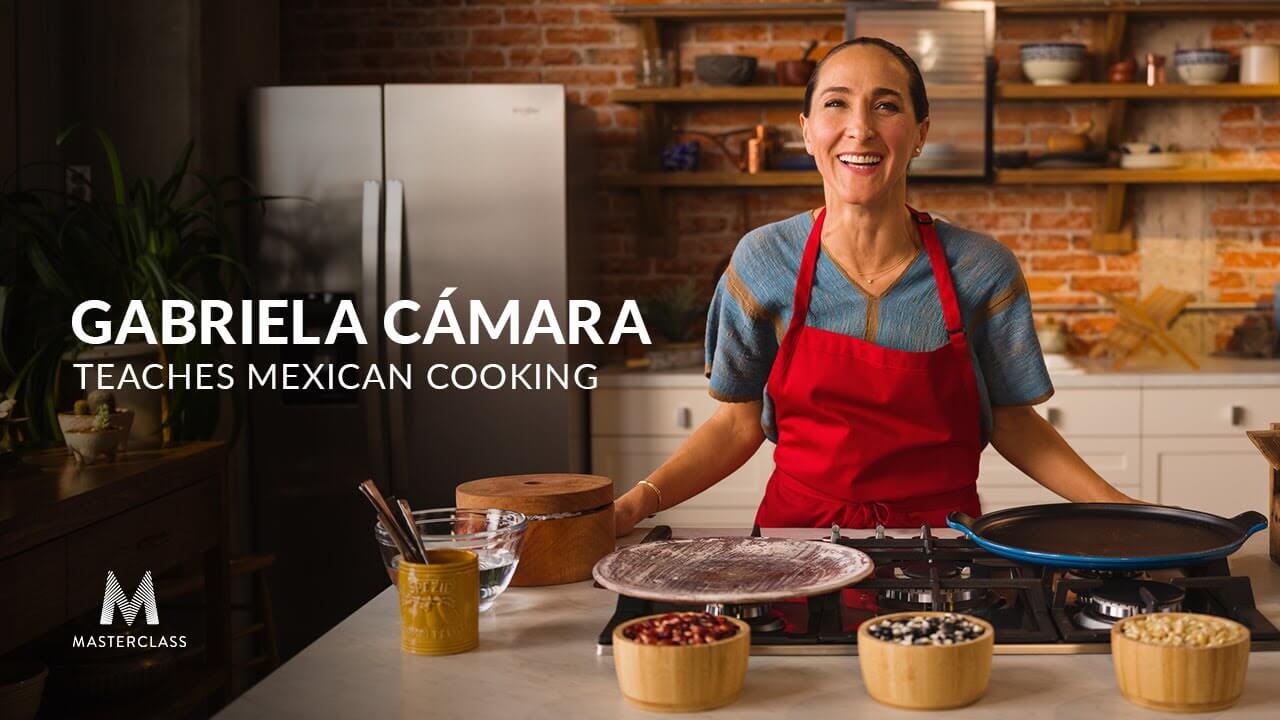Gabriela Cámara Teaches Mexican Cooking
$90.00 Original price was: $90.00.$33.25Current price is: $33.25.
It’s hard to overstate the historical, cultural, and nutritional importance of corn in Mexico. Gabriela gives an Format File: [WebRip – 13 MKV + 1 PDF] File Size: 2.638 GB
Gabriela Cámara Teaches Mexican Cooking
It’s hard to overstate the historical, cultural, and nutritional importance of corn in Mexico. Gabriela gives an overview of this staple ingredient, its heirloom varietals, and the processes for nixtamalization and grinding to produce masa.
[MUSIC PLAYING] SPEAKER: In Mexico, corn has a sacred aspect. It’s the sustain of the population of this part of the world, frankly, the most important ingredient in food. And in America, it’s just a large crop. And it’s mostly one variety. You know, when you got corn on the cob, it’s this yellow, sweet, delicious. And you have organic varieties which are more delicious than others.
But you don’t have this process of drying the corn and then grinding it, making a dough from which you make tortillas or tamales or atole or all these other things that come from the process of cooking dry corn. Drying the corn is the only way to actually keep the corn.
So we have a tradition of saving the best seeds, planting them before the rainy season, preparing the land, planting them, and then harvesting them in fall and the early fall so that you have, again, your crop for the next year. We have, I think, cataloged around 60 varieties of heirloom corn.
And they keep on discovering new species and new families. So here we have a few varieties of Mexican heirloom corns. And as you can see, we have different colors, and it’s very varied– very, very. Different parts of the country produce different types of corn. For example, this is a type of black and white corn. This is the type of blue corn. This is type of red corn.
Get immediately download Gabriela Cámara Teaches Mexican Cooking
We do see this really beautiful diversity of colors, diversity of forms. You know, it’s a round end. And these are a pointy end. You have maíz cónico, which finishes in like a little cone shape. And then you have the bolita, which ends up being round. And these are sort of colloquial names. But then you have all your scientific names.
But I do want you to notice how different all the colors are. Like, these corns came from mixing other corns– you know, the white, the red. You have this sort of tie dyed corn, which isn’t tie dyed, is just like mixed. This is a more transparent rounder type of corn, which is not as common, because, of course, what farmers usually want is a really long and thick corn so that they can get more yield from it.
And it’s easy to peel. And what you do is you– you peel it. And you get all the green. This is what you do when you want to get all your seeds. And you have starchier corns that will make for a more fluffy masa, if you will. And it’s really fascinating when you go to communities. And people use three or four different varieties of corn and maybe even one special meal.
Like, they use one for the atole which is a drink. And then they use another one for the tortillas. And then they use another one for a pazole. And then they use another one for making a different– you could have a different preparation. You can have a tlacoyo. You can have . You can have– these are all shapes of things that you make tortillas with fillings and little packages to eat.
I will show you some of these things also. Mostly, it’s become very hard to have heirloom corn be cultivated by the communi…
Savor every moment
A “star of modern Mexican cuisine,” Gabriela Cámara brings her local, sustainable twist to time-honored traditions. Now the chef of Contramar shares the richness of her culture through the art of food. Learn step-by-step recipes—for dishes of her own design, like tuna tostadas, and staples like tacos al pastor, salsa, and tortillas—and delight loved ones with your own delicious renditions of Mexican favorites.
Be the first to review “Gabriela Cámara Teaches Mexican Cooking” Cancel reply
Related products
Other Courses
Other Courses
Other Courses
Other Courses









![Penina Petersen – Freezer Meals 1: $1.50 Dinners – Starter [eBook & Video Guides]](https://graspcourse.net/wp-content/uploads/2022/02/Penina-Petersen-–-Freezer-Meals-1-1.50-Dinners-–-Starter-eBook-Video-Guides-300x171.png)



Reviews
There are no reviews yet.